Feeling queasy?
It might be one of the first signs of pregnancy.
Morning sickness—also called Nausea and Vomiting of Pregnancy (NVP)—is very common, so you’re not alone!


It might be one of the first signs of pregnancy.
Morning sickness—also called Nausea and Vomiting of Pregnancy (NVP)—is very common, so you’re not alone!

If you lose 5% or more of your body weight and become dehydrated, you may need medical care, including IV fluids.
and fades by the 14th week. For some women, it lasts longer – even the whole pregnancy.
– day or night.
Studies show it may lower the risk of miscarriage by 50-75%.
Some women find that crackers and soda help, while others prefer a bean burrito. Try to choose nutritious foods when you can, but don’t worry if your diet isn’t perfect. Once nausea improves, you can focus on eating healthier.
An empty stomach can make nausea worse. Eat small meals and snacks throughout the day.
Keep easy-to-grab foods in your purse or car, like:
Dehydration is dangerous for both you and your baby. Try to drink at least eight glasses of fluids daily.

Helpful drinks include:
You can also get fluids from foods like:
If you’re vomiting, eat foods high in potassium, like:
Pregnancy can make your sense of smell extra sensitive. Smells you used to like may now cause you to run for the restroom.
Some scents that might trigger nausea include:
Lying down in a quiet, dark room or taking a short nap can help ease nausea.

These snacks are easy to digest and packed with nutrients:

Listen to your body, rest when needed, and don’t hesitate to reach out to WIC for support!
National Institutes of Health. (2016, September 26). NIH study links morning sickness to lower risk of pregnancy loss. U.S. Department of Health and Human Services.
https://www.nih.gov/news-events/news-releases/nih-study-links-morning-sickness-lower-risk-pregnancy-loss
Mayo Clinic Staff. (2022, March 10). Is nausea during pregnancy a good sign? Mayo Clinic.
https://www.mayoclinic.org/healthy-lifestyle/pregnancy-week-by-week/expert-answers/nausea-during-pregnancy/faq-20057917
American College of Obstetricians and Gynecologists. (2023). Morning sickness: Nausea and vomiting of pregnancy.
https://www.acog.org/womens-health/faqs/morning-sickness-nausea-and-vomiting-of-pregnancy
Kubala, J. (2020, August 9). 19 water-rich foods that help you stay hydrated. Healthline.
https://www.healthline.com/nutrition/19-hydrating-foods#TOC_TITLE_HDR_19
Kubala, J. (2020, June 22). 14 healthy foods that are high in potassium. Healthline.
https://www.healthline.com/nutrition/high-potassium-foods#TOC_TITLE_HDR_6
Author: Bridget Swinney, MS, RDN
Continue to nurse on-demand, about 4-6 times in 24 hours.
Babies may experience a growth spurt around 6 months of age and may feed more often.
Offer breast milk in a cup.
24-32 oz. per day of infant formula.
Offer formula in a cup.
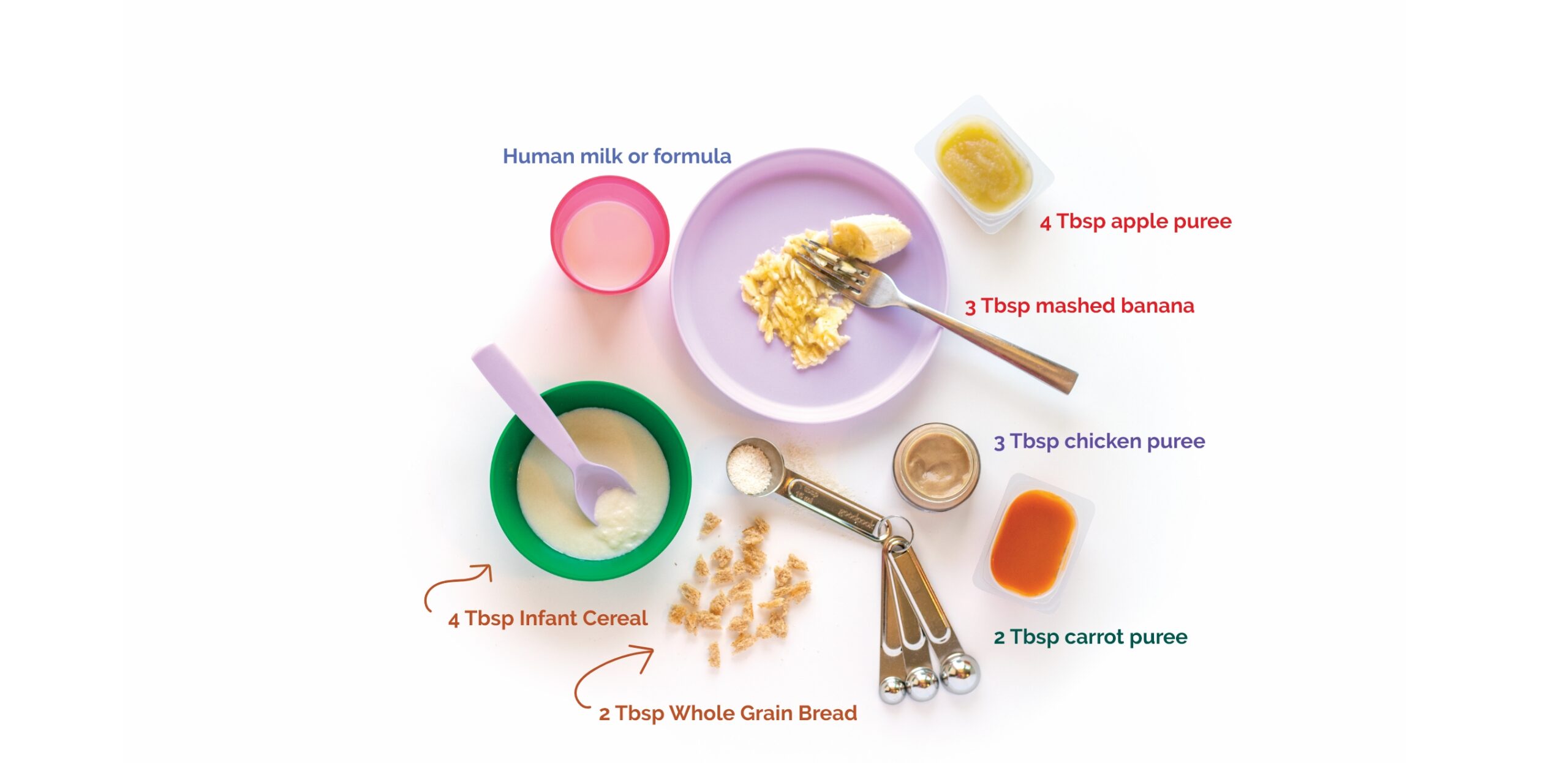
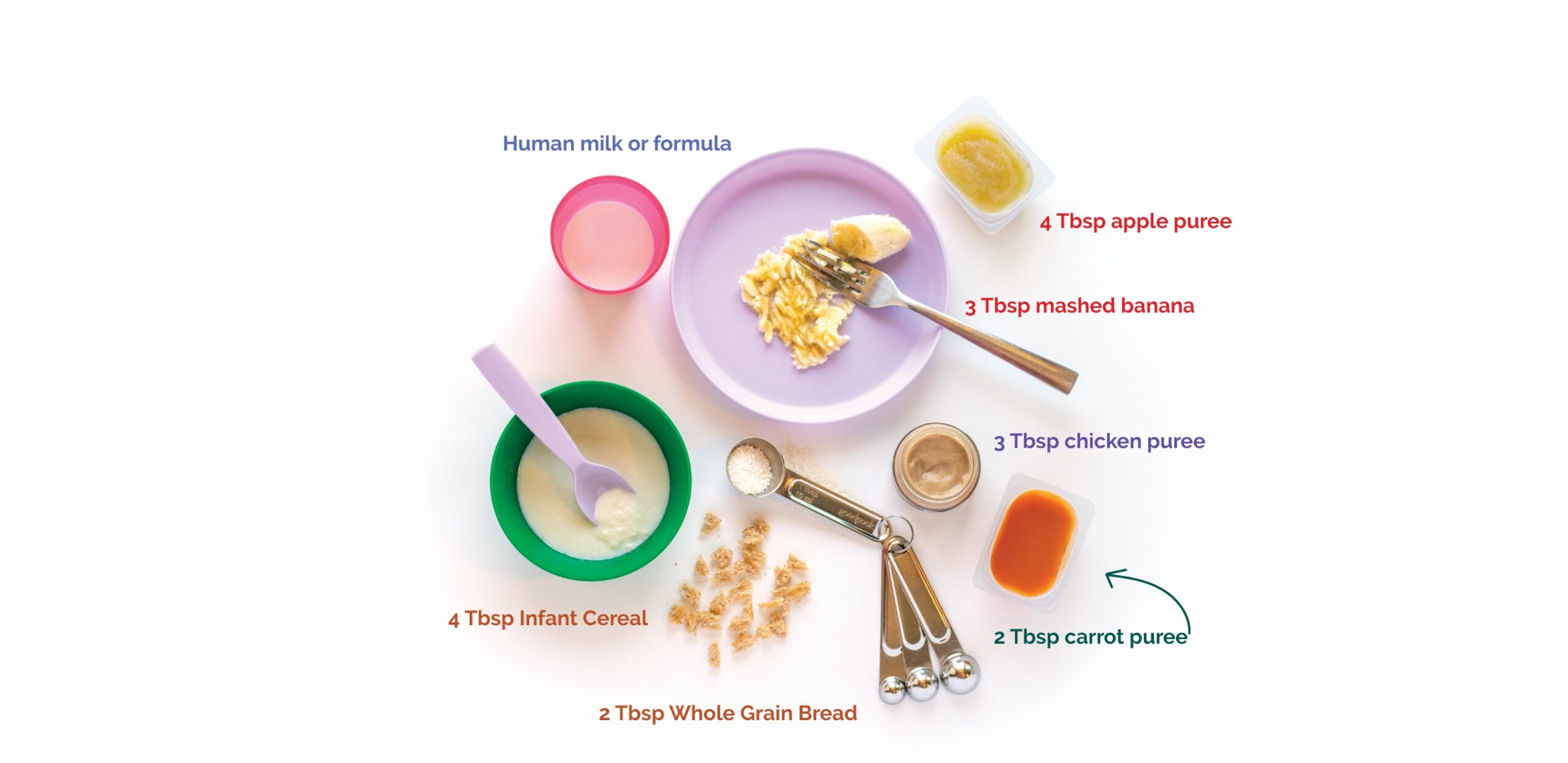

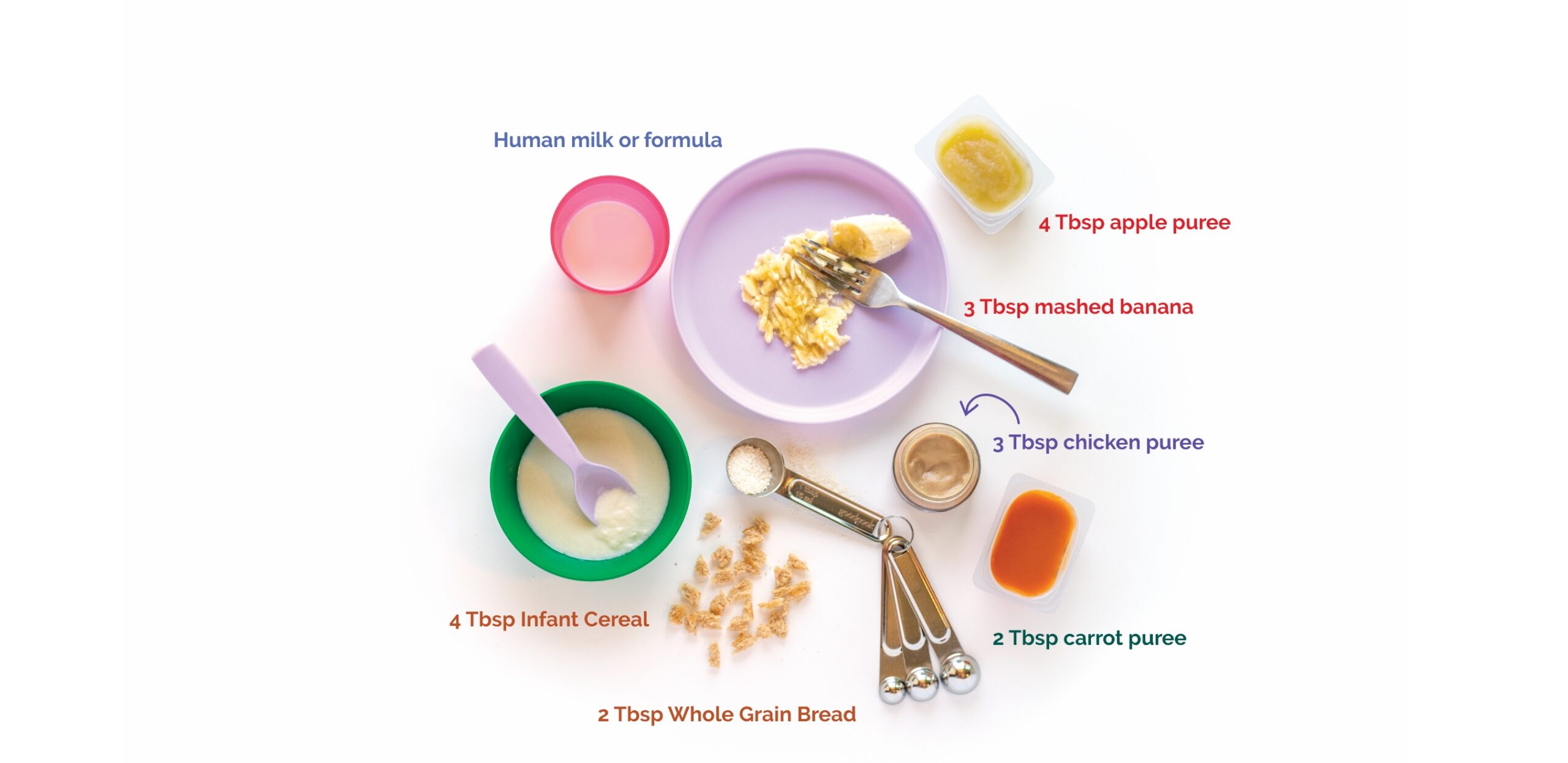
Breast milk is the most important source of nutrition for your baby, even after you start offering solid foods.
Continue to nurse on-demand, 3 or more times per day.
16-24 oz. per day. Offer in a cup.
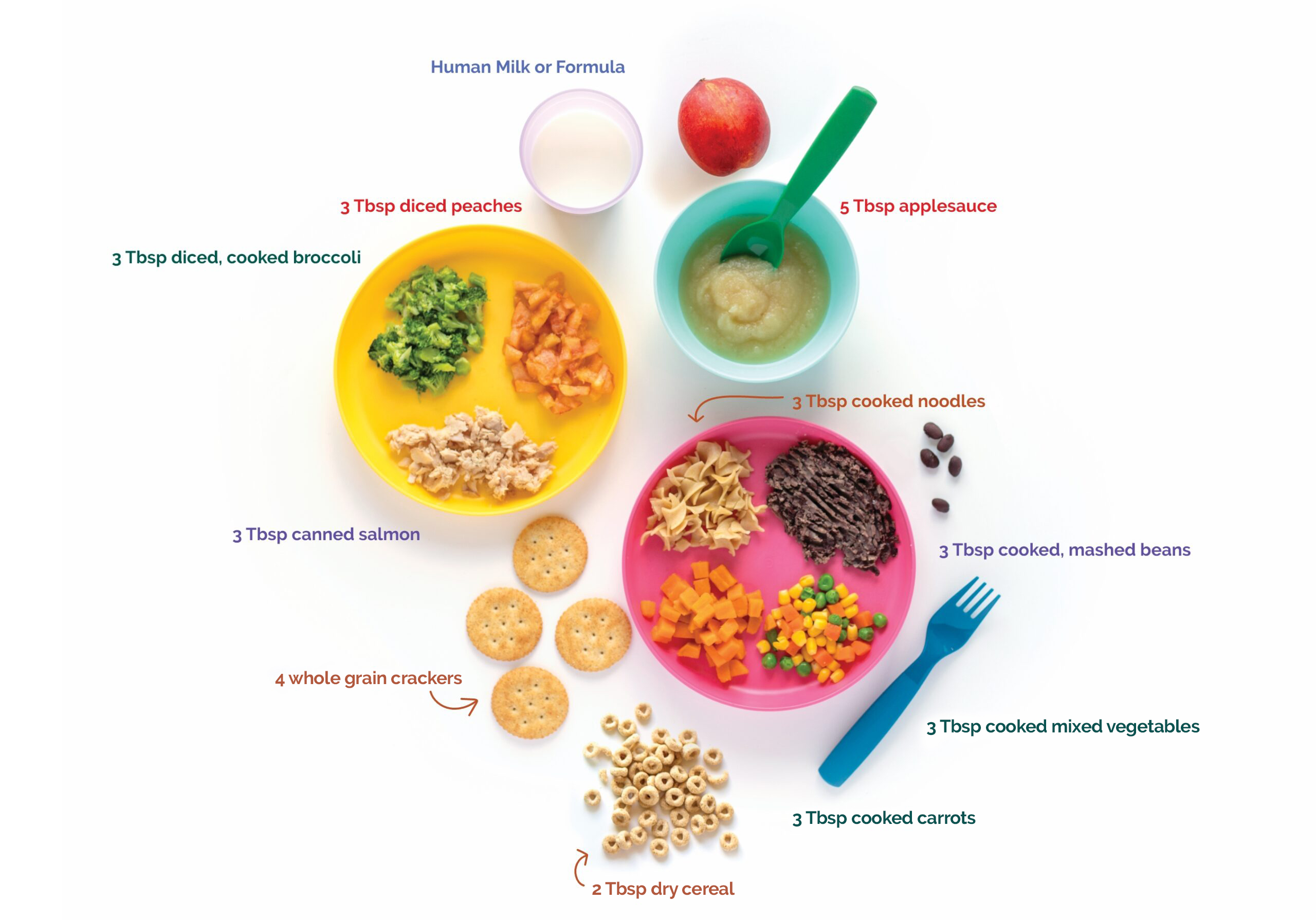
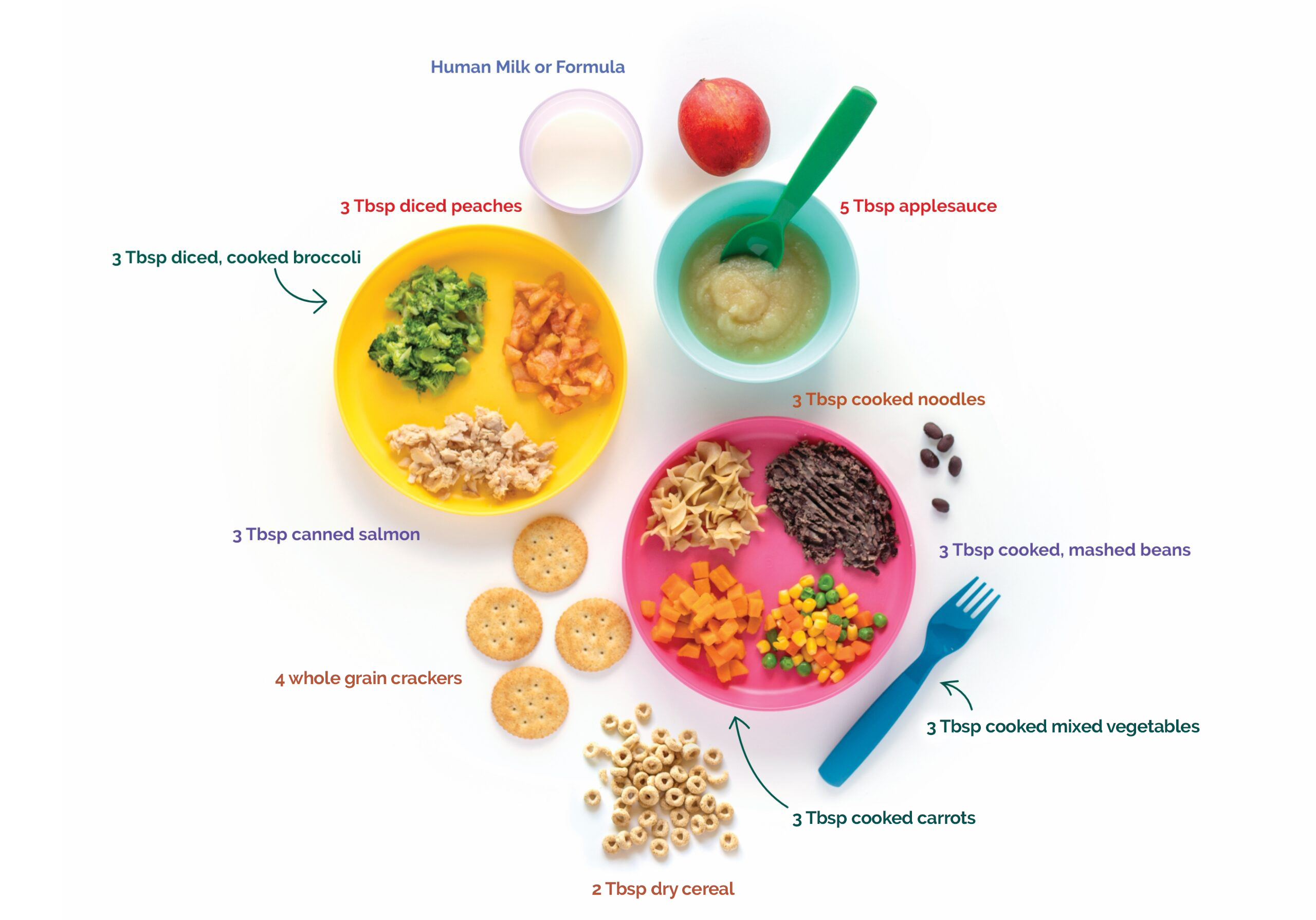
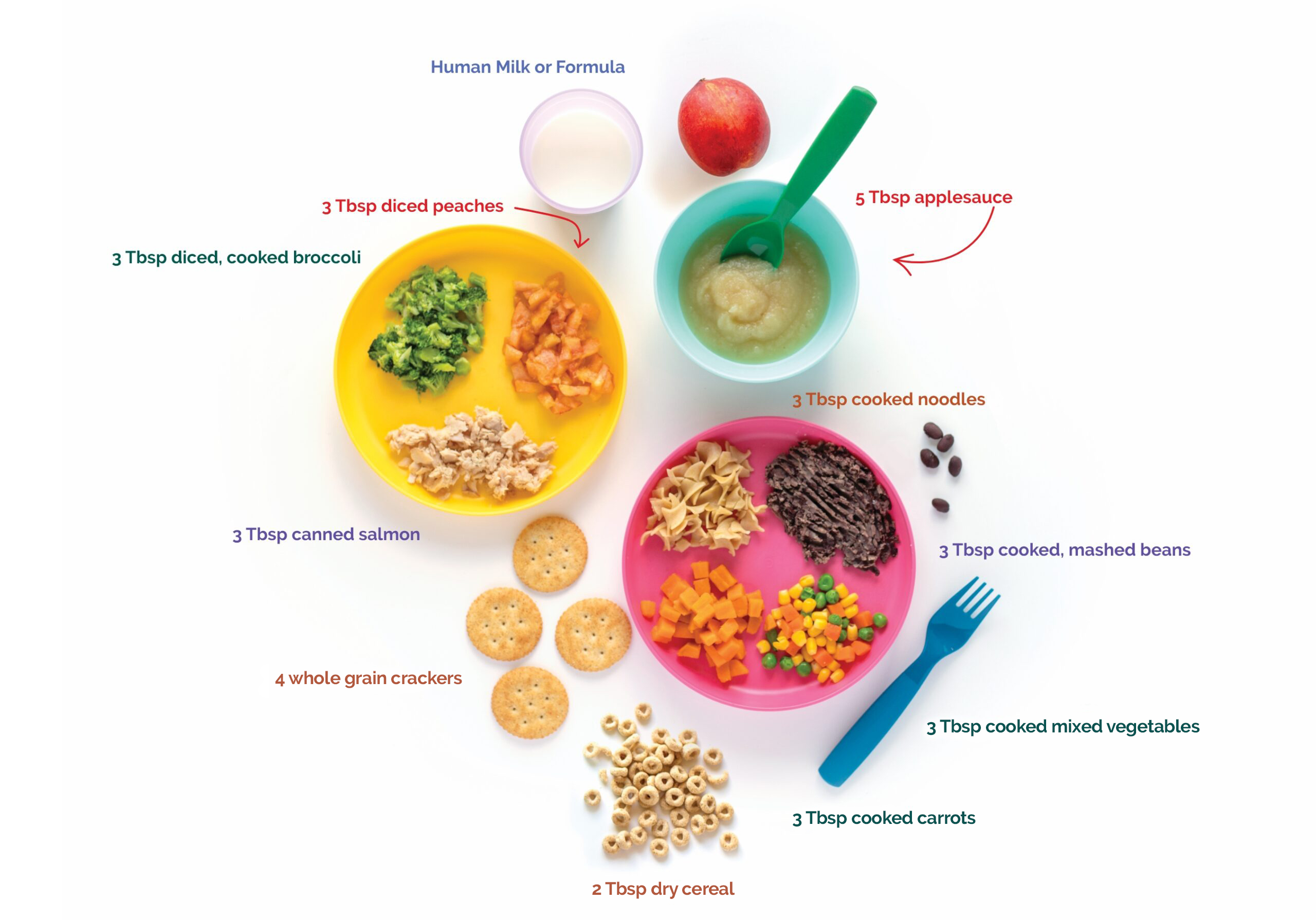
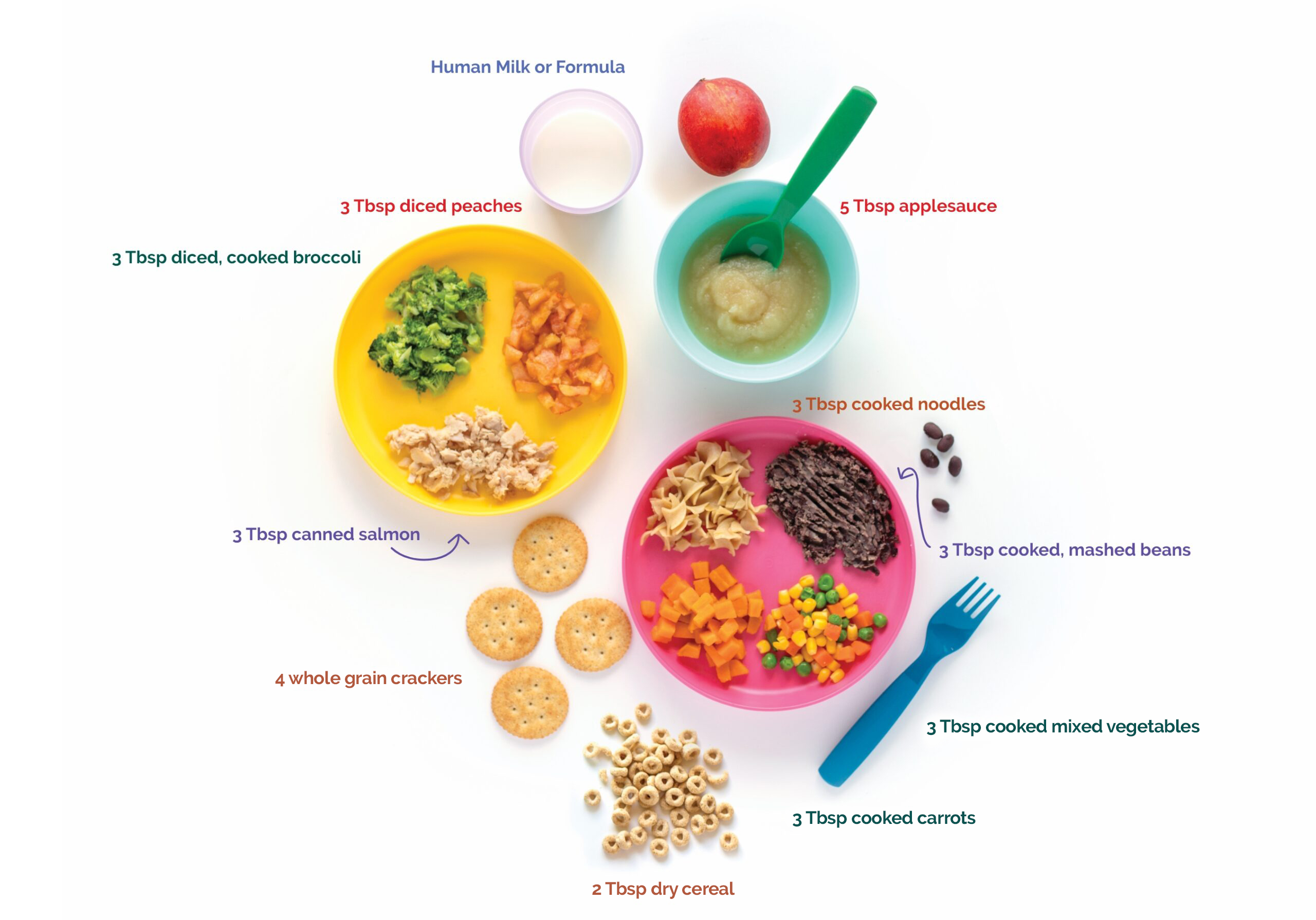
Feed solids with a spoon. Never put cereal in a bottle.
Continue nursing on-demand, at least 4 times in 24 hours.
If your baby seems less interested in nursing after you introduce solids, try nursing before you offer solids.
Offer breast milk in a cup.
24-32 oz. per day.
Offer formula in a cup.
4-8 Tbsp. per day.
Plain iron-fortified infant cereals.
Plain rice or pasta.
Baby crackers, small pieces of bread, or soft tortillas.
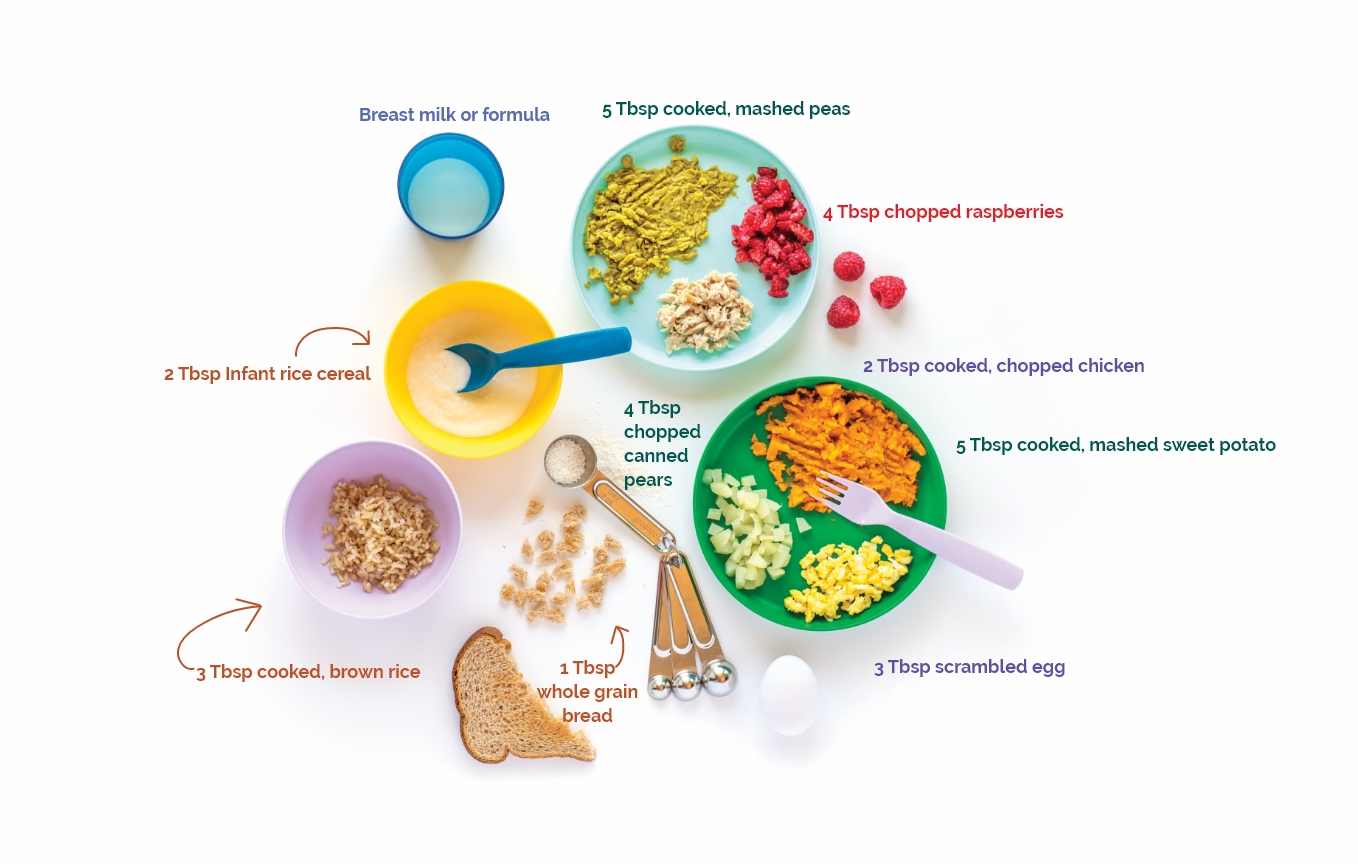
8-12 Tbsp. per day.
Plain cooked vegetables, mashed with a fork.
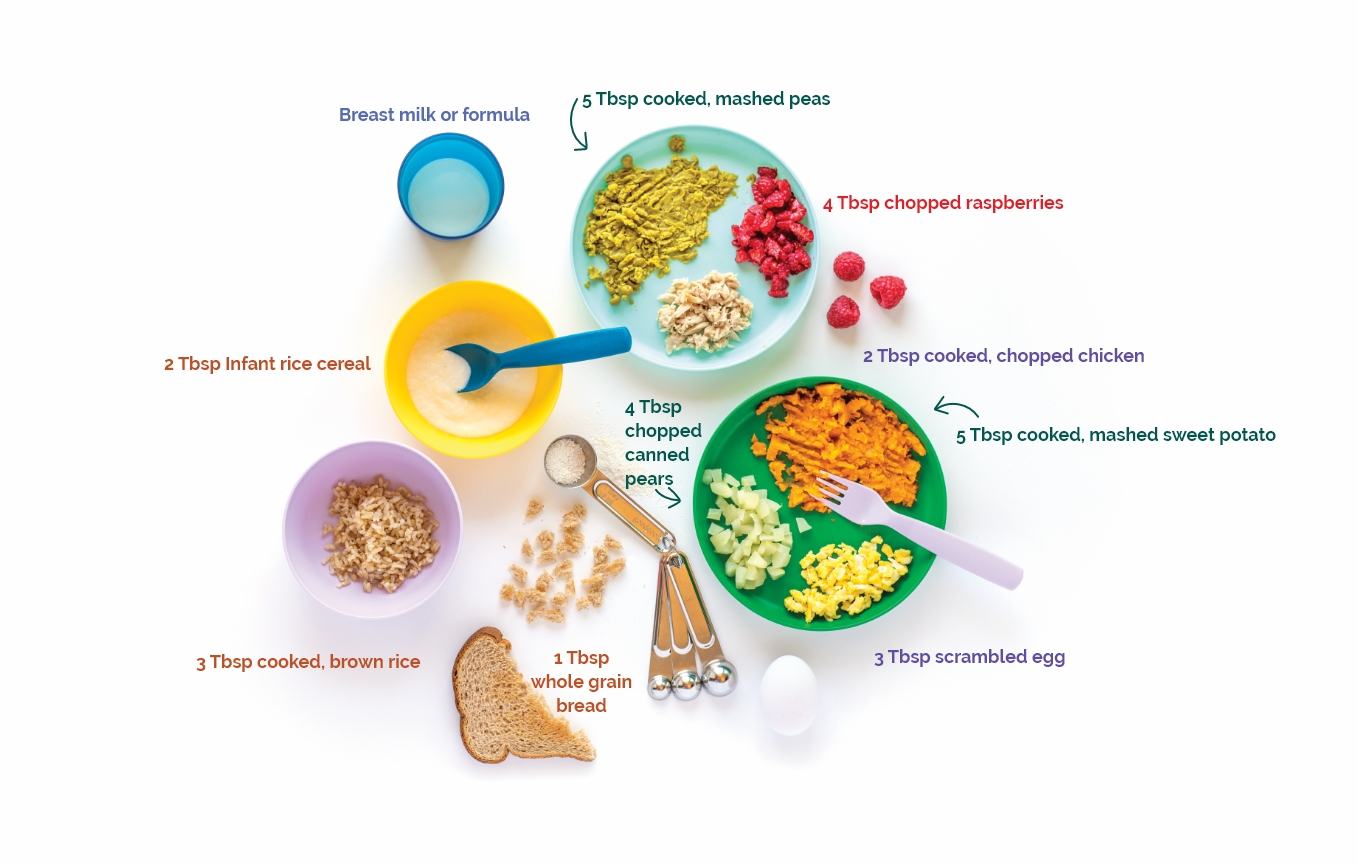
8-12 Tbsp. per day.
Peeled soft fruit in bite-size pieces.
Unsweetened canned fruit.
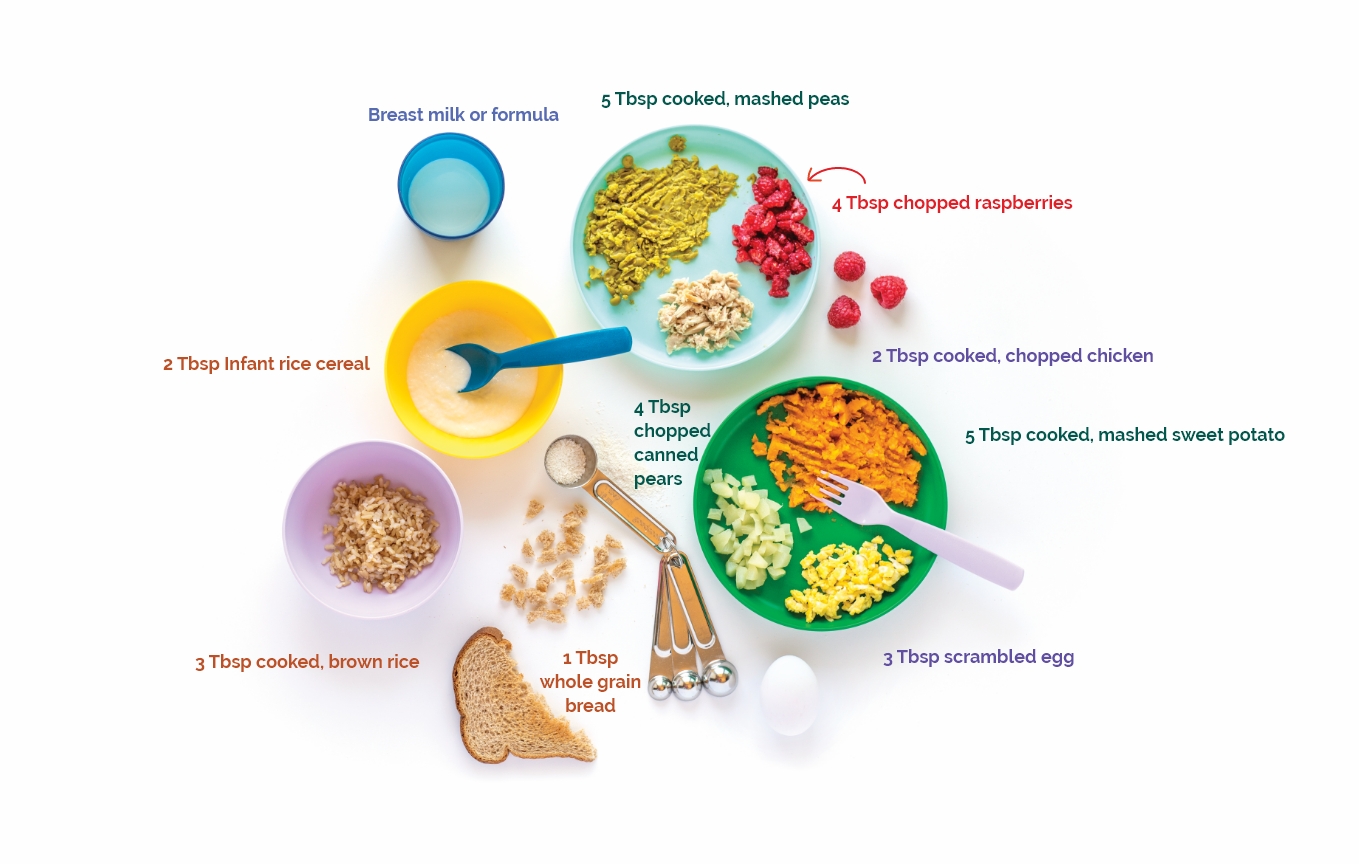
4-8 Tbsp. per day.
Finely ground, chopped, or diced meats, poultry, eggs, fish, or cooked mashed beans.
Cottage cheese or mild cheese.
Thinned, smooth peanut or nut butter.


Around 2-3 weeks, 6 weeks, 3 months, and 6 months of age, babies may experience a growth spurt when they feed more often.
As they grow babies can hold more milk, so feedings may become further apart and take less time.
To prevent choking, always hold your baby when feeding. Never prop up a bottle to feed.
Start offering whole milk when your baby is one year old.
The American Academy of Pediatrics recommends exclusive breastfeeding for the first six months and that breastfeeding continue for at least 12 months and beyond.

Wait to offer solid foods until your baby:
To prevent choking, always hold your baby when feeding. Never prop up a bottle to feed.
Try one new food at a time. Wait 5 days before trying another new food to watch for allergies. Food allergies may include wheezing, rash, or diarrhea.
Introduce peanut butter around 6 months. Spread a small, thin smear of peanut butter or nut butter thinly on a cracker. Watch your baby for any reaction for the next 2 hours.
Babies under one year should NOT have honey due to the risk of botulism. Also, babies should not have foods that can cause choking like nuts or whole grapes.
All babies are different. Talk with WIC or your baby’s healthcare provider about your baby’s needs.






Before teeth come in, wipe gums with a soft, clean wash cloth after each feeding, especially before bed.
Nurse your baby on-demand, at least 7-9 times in 24 hours.
When your baby starts teething, they may want to nurse more often.
25-45 oz in 24 hours.
Your baby needs about 4-6 oz of iron-fortified formula every 3-4 hours.
Your baby may start to feed on a schedule. Instead of focusing on fixed amounts, let your baby tell you when they have had enough.
Newborns have tiny tummies and need to be fed often. In the first few weeks, you may need to wake your baby to feed if they sleep longer than 4 hours.
Many babies are fussy during a growth spurt and will want to nurse longer and more often. This is called cluster feeding. This is your baby’s way of helping you increase your milk supply so that you can keep up with their needs. Remember, the more your baby nurses, the more milk your body makes.
Growth spurts can happen at any time, and every baby is different.
They often happen at these ages:

2 to 3 Weeks

6 Weeks

3 Months

6 Months
Breastfeed 8-12 times in 24 hours to help your newborn stay healthy.
Nurse on-demand and when your newborn shows signs of hunger, such as sucking on hands or smacking lips.
In the first few days, newborns need 2-3 oz. of iron-fortified infant formula every 3-4 hours.
By the end of the first month, your newborn needs about 4 oz. every 4 hours.
Feed on-demand and when your newborn shows signs of hunger.